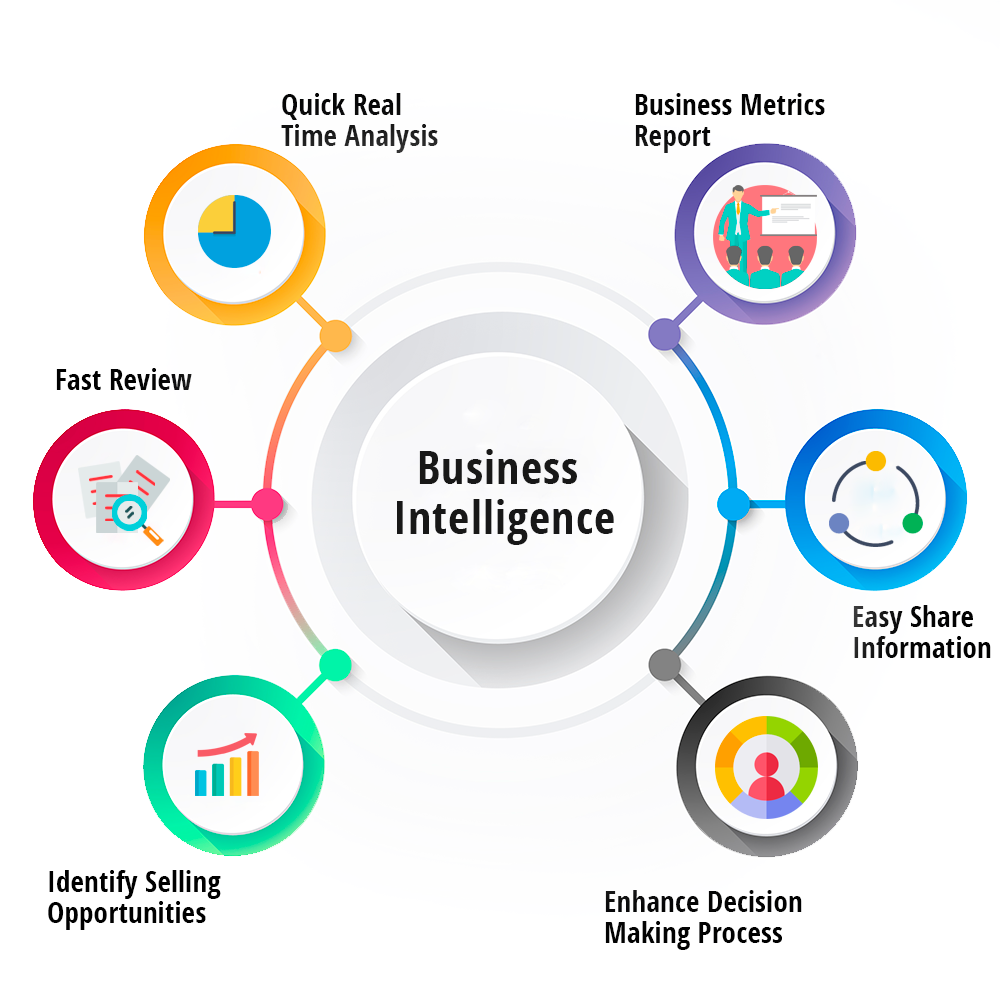
How Business Intelligence Software Drives Efficiency in Modern Teams
In today’s fast-paced business landscape, organizations are constantly seeking ways to optimize their operations, streamline processes, and boost productivity. One key strategy that has emerged as a game-changer in achieving these goals is the adoption of Business Intelligence (BI) software. By harnessing the power of data analytics, BI software enables modern teams to make informed decisions, automate tasks, and drive efficiency across various aspects of their operations.
What is Business Intelligence Software?
Business Intelligence software refers to a set of tools and technologies that help organizations collect, analyze, and visualize data from various sources, including internal systems, external market research, and customer feedback. The primary objective of BI software is to provide insights and recommendations that enable businesses to make data-driven decisions, identify areas for improvement, and optimize their performance.
Key Features of Business Intelligence Software
Modern BI software typically includes a range of features that enable teams to extract insights from data, including:
- Data Integration: The ability to connect to multiple data sources, including databases, spreadsheets, and cloud applications.
- Data Visualization: The capability to present complex data in a clear and intuitive format, using charts, graphs, and other visualizations.
- Predictive Analytics: The use of statistical models and machine learning algorithms to forecast future trends and outcomes.
- Reporting and Dashboards: The ability to create customized reports and dashboards that provide real-time visibility into key performance indicators (KPIs).
- Collaboration and Sharing: The ability to share insights and reports with stakeholders, including team members, executives, and customers.
Benefits of Business Intelligence Software
The adoption of BI software can bring numerous benefits to modern teams, including:
- Improved Decision-Making: By providing access to accurate and timely data, BI software enables teams to make informed decisions that drive business outcomes.
- Increased Efficiency: Automating tasks and streamlining processes, BI software helps teams reduce manual effort, minimize errors, and optimize resource allocation.
- Enhanced Collaboration: By providing a shared platform for data analysis and visualization, BI software facilitates collaboration and communication among team members and stakeholders.
- Competitive Advantage: Organizations that adopt BI software can gain a competitive edge by leveraging data-driven insights to innovate, differentiate, and respond to market changes.
- Cost Savings: By optimizing operations, reducing waste, and improving resource utilization, BI software can help organizations reduce costs and improve profitability.
Real-World Examples of Business Intelligence Software in Action
Several organizations have successfully leveraged BI software to drive efficiency and improve performance, including:
- Retail: Walmart uses BI software to analyze customer purchasing behavior, optimize inventory management, and improve supply chain efficiency.
- Finance: Citibank employs BI software to analyze customer financial data, identify trends, and offer personalized services and recommendations.
- Healthcare: The Mayo Clinic uses BI software to analyze patient data, optimize treatment protocols, and improve patient outcomes.
- Manufacturing: General Electric uses BI software to analyze production data, optimize supply chain efficiency, and reduce costs.
Best Practices for Implementing Business Intelligence Software
To ensure successful implementation of BI software, organizations should follow these best practices:
- Define Clear Objectives: Establish clear goals and objectives for BI software adoption, including specific business outcomes and metrics.
- Choose the Right Tool: Select a BI software that meets the organization’s needs, including data sources, user requirements, and scalability.
- Develop a Data Strategy: Establish a data governance framework to ensure data quality, security, and compliance.
- Train and Support Users: Provide comprehensive training and support to ensure users can effectively utilize BI software and drive business outcomes.
- Monitor and Evaluate: Regularly monitor and evaluate BI software performance, including user adoption, business outcomes, and return on investment (ROI).
Challenges and Limitations of Business Intelligence Software
While BI software offers numerous benefits, organizations may face challenges and limitations, including:
- Data Quality Issues: Poor data quality, including inaccurate, incomplete, or inconsistent data, can limit the effectiveness of BI software.
- User Adoption: BI software adoption can be hindered by lack of user training, support, or buy-in.
- Integration Complexity: Integrating BI software with existing systems and data sources can be complex and time-consuming.
- Cost and Resource Intensity: Implementing and maintaining BI software can require significant investment in resources, including hardware, software, and personnel.
- Security and Compliance: BI software can introduce security and compliance risks, including data breaches, unauthorized access, and non-compliance with regulations.
Future of Business Intelligence Software
As the business landscape continues to evolve, BI software is expected to play an increasingly important role in driving efficiency and innovation. Emerging trends and technologies, including:
- Artificial Intelligence (AI): AI and machine learning algorithms will enable BI software to provide more accurate and predictive insights.
- Cloud Computing: Cloud-based BI software will offer greater scalability, flexibility, and accessibility.
- Big Data: The increasing volume, variety, and velocity of data will require BI software to adapt and provide more advanced analytics and visualization capabilities.
- Internet of Things (IoT): BI software will need to integrate with IoT devices and sensors to provide real-time insights and optimize business operations.
In conclusion, Business Intelligence software has become a crucial tool for modern teams seeking to drive efficiency, optimize operations, and gain a competitive edge. By providing access to data-driven insights, automating tasks, and enhancing collaboration, BI software can help organizations achieve their goals and improve overall performance. As the business landscape continues to evolve, the adoption of BI software is expected to become even more widespread, driving innovation, growth, and success in various industries and sectors.
Closure
Thus, we hope this article has provided valuable insights into How Business Intelligence Software Drives Efficiency in Modern Teams. We thank you for taking the time to read this article. See you in our next article!


